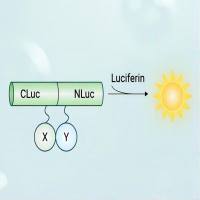Electron Spectroscopic Imaging of the Nuclear Landscape
互联网
594
Our understanding of sub-nuclear organisation is largely based on fluorescence and electron microscopy methods. Conventional electron microscopy, which depends on heavy atom contrast agents, provides excellent contrast of condensed chromatin and some sub-nuclear structures such as the nucleolus. Unfortunately, other components, 10-nm chromatin fibres for example, do not contrast well. Electron spectroscopic imaging partially overcomes this limitation. In particular, phosphorus and nitrogen mapping provide sufficient contrast and resolution to visualise 10-nm chromatin fibres, while providing an opportunity to distinguish protein-based from nucleic acid-based supramolecular structures, such as the cores of nuclear bodies. Electron spectroscopic imaging, therefore, offers an approach to address many questions related to the functional organisation of the interior of the cell nucleus, which is illustrated in this chapter.









